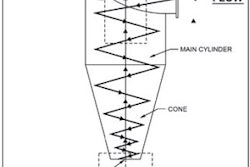
By the end of 2020, Mars Petcare plans to end operations at a pet food manufacturing facility in Whanganui, New Zealand, reported Stuff - New Zealand. Mars plans to move the plant’s production of Whiskas cat food pouches to Thailand. The New Zealand factory employs 152 people, who will lose their jobs after the facility closes. They will receive compensation, retraining and assistance in finding new jobs from Mars, as per a collective employment agreement. The facility had been operating below production capacity for several years. The Whanganui plant has operated for 26 years. In 1993, Mars purchased the building from Lucky Petfood. Mars Petcare cited a desire to be close to Asian pet food markets and reduce operating costs as the reason for the move.
Asia-Pacific dominates pet food market growth potential
The Asia-Pacific region leads global momentum of sales growth for dog and cat food, said Galen Rokey, process technology director for extruder manufacturer Wenger, during the company’s Pet Food Process Technology Seminar in Singapore on October 1.
Rokey presented Euromonitor International data on the Asia-Pacific region. For 2018, the Asia-Pacific region accounted for lower sales value than North America, Western Europe and Latin America. However, Asia-Pacific nations had higher compound annual growth rates (CAGR) than any other region at 12.5% compound annual growth rate. When considered along with the 1.7% CAGR in Australasia, the Western Pacific rim presents large growth potential for pet food companies.
China leads Asia-Pacific potential pet food market growth
Among Asia-Pacific countries, China stands out. In 2018, Chinese pet owners spent US$2.217 billion on all pet foods, according to Euromonitor data presented by Rokey. Euromonitor analysts project that figure to reach US$6.125 billion in 2022, a CAGR of 28.9%. Within the overall pet food market, dog food sales in China stood at US$1.485 billion in 2018. By 2022, dog food sales in China may grow to US$4.103 billion. Cat food reached US$718.7 million in 2018 and may grow to US$2.005 billion in 2022.
The United States and Chinese pet food markets are now the mirror opposites of each other, Rokey said. While the U.S. pet food market dwarves the rest of the world, there is little potential growth potential in that mature market. On the other hand, the Chinese pet food market is still much smaller than the U.S., but has grown dramatically and seems likely to continue.
China’s importance to the future of pet food partly results from a growing population of pet dogs and cats in the country. Euromonitor ranked China #1 in total growth of projected dog and cat population. Other Asian countries also ranked in the top seven. India and Vietnam ranked second and fifth respectively in total growth. Along with China, India and Vietnam, Indonesia and Malaysia ranked in the top seven for CAGR of dog and cat population.
As pet populations grow, the Asia-Pacific region, along with Latin America, seems likely to lead global sales growth for dog, cat and other pet foods. Euromonitor forecast that economy, mid-priced and premium varieties of both dog and cat food will all have a CAGR of more than 10% in the Asia-Pacific zone. Mid-priced cat food may increase by nearly 20%.
The Asia-Pacific region seems poised to increase in its importance to the pet food industry, as both sales and volume seem likely to grow in the near future.



















